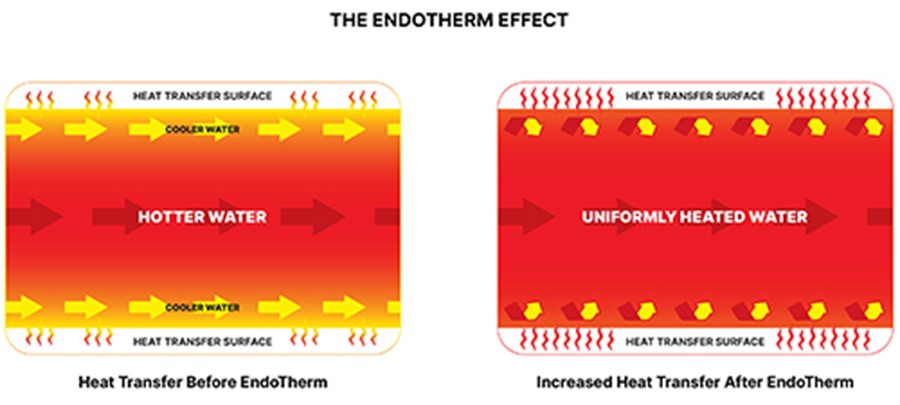FortisBC rebate helps lower operating costs for building owners
Print this Article | Send to Colleague
FortisBC, is offering its customers a substantial rebate on the pioneering water additive EndoTherm® under the new “Hydronic Additive” category. When added to hydronic system water, it lowers energy consumption and emissions by up to 15%, helping buildings reach GHG emission goals with no new equipment or downtime. This reduces energy costs, offering an average simple payback of under two years.
Building owners and operators in BC spend a significant portion of their operating costs on energy to run their hydronic boiler systems, totalling millions of dollars annually just in BC’s densely populated Lower Mainland alone. Heating systems account for 39% of CO2 emissions globally and approximately 25% in the Vancouver core.
Building emissions are typically measured by a combination of two factors. The “operational carbon emissions” derived from powering lighting, heating, and cooling the facility. The “embodied carbon” of a building is the amount of carbon generated during construction — the manufacturing of building materials, transport, machine operation, etc. The latter represents one-quarter of a building’s total lifecycle carbon emissions.
As a carbon offset and an effort to control costs, standard emission control methods in buildings include reducing temperatures in common areas, encouraging occupants to conserve energy, investing in expensive efficient equipment and increasing servicing to retain consistent efficiency. However, introducing the energy-saving additive EndoTherm to hydronic boiler systems can help buildings reach GHG emissions goals without a substantial capital investment on equipment, excessive labor, downtime, or occupant intervention.
How EndoTherm works
With natural gas powered boiler systems, buildings use water or a mix of water and glycol to transport heating and cooling. The high surface tension of water limits heat transfer causing the system to run inefficiently, consuming excess energy and generating increased emissions.
 |
|
| Figure 1: Improvement to heat exchange |
When added to any hydronic systems at a low concentration, EndoTherm reduces surface tension inside pipes and coils by 60%, significantly improving heat transfer. [Fig. 1] By increasing heat transfer, the system will hit set-points faster and run less frequently to maintain heat, improving energy efficiency. [Fig. 2]
Case Study
To validate the effectiveness and cost savings to customers, FortisBC reviewed several EndoTherm case studies covering a wide range of industries.
 |
|
| Figure 2: Time and fuel required to reach set points |
BC Housing, BC’s largest affordable housing provider, implemented EndoTherm® in 12 multi-unit residential buildings in 2018 and 2019 to help reach emissions reduction targets.
Space heating with natural gas is the largest source of GHG emissions from buildings in B.C. Space heating accounts for between 67% and 84% of the total natural gas consumption for the buildings in this study. BC Housing’s goal is to reduce GHG emissions by 50% from 2005 levels by 2030, and 80% by 2050.
In the study, 10 buildings are two to four storey wood-framed low- to mid-rise construction and two buildings are concrete high-rises. The buildings selected had not undergone recent retrofits that would impact heating loads, such as envelope upgrades or changes to mechanical systems in the last two years.
 |
|
| Average gas consumption over the study period showed a drastic reduction. |
EndoTherm was implemented as a one-time addition to the hydronic heating system without the need for downtime or equipment changes. Analysis of the efficacy of this energy conservation measure was done by comparing whole-building natural gas use (daily and monthly consumption data as available) from before and after the installation, normalized for weather.
“I was skeptical of EndoTherm at first,” said Bill MacKinnon, senior manager of energy and sustainability at BC Housing. “BC Housing decided to try a pilot of the product in 12 of our buildings. We realized 5 to 8.4% heating energy savings over the course of our study resulting in a 2.7 to 4.5 year payback.”
EndoTherm and the FortisBC rebate are applicable to nearly all hydronic boiler systems.

